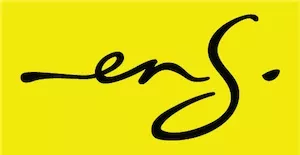- within International Law, Law Department Performance and Consumer Protection topic(s)
This article discusses a recent EU judgment in which Puma, the brand with the iconic Leaping Cat (Puma) Device, succeeded in a trade mark opposition to an EU trade mark application in the name of Mr Lukas Rohlik ("Rohlik") of the Czech Republic.
The contested trade mark
Rohlik's trade mark comprises a Leaping Lion Device covering clothing in class 25, as well as certain other goods falling in that very broad class 9. Rohlik's Lion Device leaps to the right. Puma's cat leaps in the opposite direction. The judgment of EUIPO's Opposition Division was handed down on 16 October 2025. Below is a representation of the respective trade marks:

Some interesting legal issues
A number of legal issues were discussed in the judgment, some of which readers may find interesting:
Trade mark association
The judgment suggests that if you are involved in the field of sport or fashion personal accessories and you have a feline device trade mark (like Puma) you should assume certain things, including:
'It is highly likely that the presence of another feline device in a brand operating in a closely related field, such as sports and fashion articles and personal accessories and/or components that may be used in closely related fields, could lead the public to associate the feline device in the contested sign with the opponent's goods, potentially damaging the opponent's brand reputation.'
What the court seems to be saying is that there is only room for one feline!
An ambassadorial role
The judgment says that the earlier Puma trade marks 'are not only well-known but also act as ambassador for a certain set of values that are transmitted to their consumers, for instance strength, speed and active sporting spirit.'
An inherent economic value
The judgment goes on to say:
' ...each mark has an inherent economic value which is independent of and separate from that of the goods or services for which it is registered. The messages which are conveyed, inter alia, by a mark with a reputation or which are associated with it confer on that mark a significant value which deserves protection, particularly because, in most cases, the reputation of a mark is the result of considerable effort and investment on the part of its proprietor.
A transfer of image
The notion of a 'transfer of image' seems to be a recent development. The judgment says as follows on this concept:
'Given the proximity or applicability of the applicant's goods to the sport sector, whereas the opponent's mark is precisely reputed for its expansion in the sports realm, it is conceivable that the applicant may eventually benefit from a transfer of the earlier marks' image and qualities.'
Facilitating marketing and an economic boost
The judgment says that 'the association of the contested sign with the opponent's reputed feline device will facilitate the marketing of the applicant's goods, and the applicant may easily gain an economic ''boost'' without having made any financial investment or marketing effort.'
The judgment goes on to make the point that this economic boost will 'constitute an unfair benefit for the applicant on the back of the opponent's long-standing marks, associated with tradition and good image in the relevant sector'.
The result
Very succinct: 'The Opposition Division concludes that the contested trade mark is likely to take unfair advantage of the distinctive character or the repute of the earlier trade marks.'
Final words
Some of the concepts discussed in this article - inherent economic value, transfer of image, facilitating marketing and economic boosts - may be new to some readers and are food for thought!
*Reviewed by Gaelyn Scott, Head of ENS' Intellectual Property Department
The content of this article is intended to provide a general guide to the subject matter. Specialist advice should be sought about your specific circumstances.


